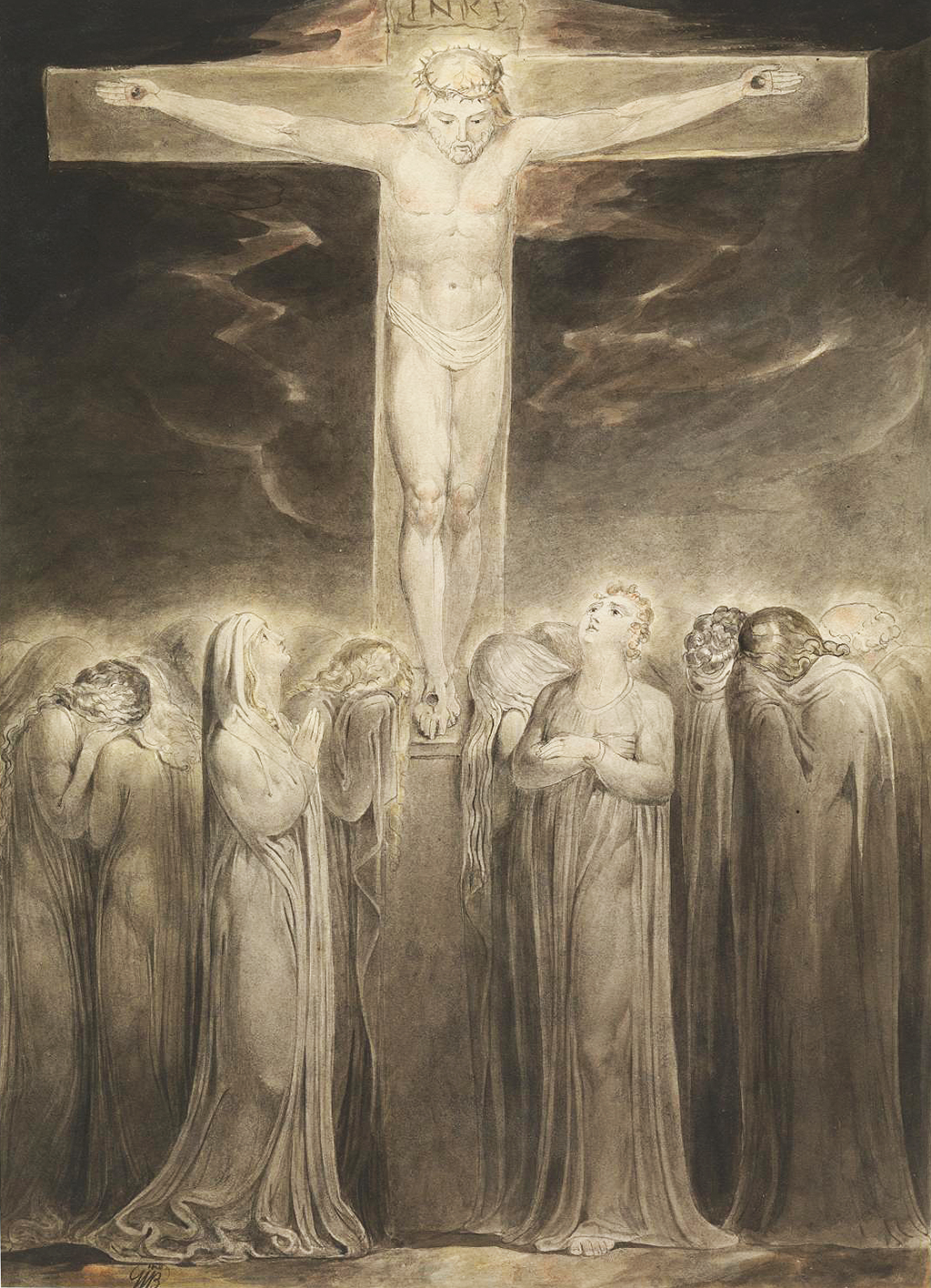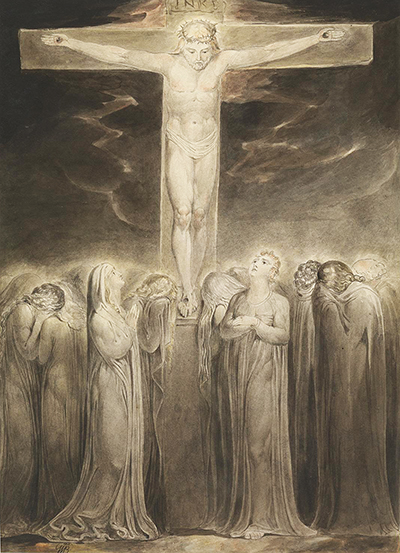The Crucifixion of Christ is one of the most recognisable scenes in Western art, and wider society as a whole. Many artists have chosen to use it as inspiration for their work, often from the perspective of showing respect and love to this key element of the story of Christianity.
This beautifully detailed artwork captures a number of figures mourning the fate of their much loved hero as he hangs from the huge wooden cross. Lighting is carefully used here, helping to lead the viewer's eyes towards the two important parts of this composition. Firsly, Christ himself, and then the facial expressions of the mourners below. There is then some flourishes behind Christ which give an indication of his divine purpose and the influence of powers outside of who is included within the painting. This item was produced with ink and watercolour, though Blake would feature Christ many times within his career besides just this piece here. It is dated at around 1805, which was around the peak of his art, and he would continue to work for several more decades afterwards. He is also famous for poetry, gifting us the likes of The Tyger and London. You will also probably be aware of the term, Ancient of Days, which refers to both a painting and also a passage from some of his poetry.
The sacrifice of Jesus for the benefit of us all remains a highly important part of living as a Christian. Blake himself was a highly moral person who often felt that modern society was moving away from the sort of guidance found in the Bible. He was therefore happy to remind us of scenes such as this, and encourage everybody to return to the right path, as he saw it. The artist actually completed a series of watercolour paintings for Thomas Butts at around the same time, with this item, The Crucifixion Behold Thy Mother being a part of that. Others in this group included The Entombment, The Resurrection, The Raising of Lazarus, Christ in the Sepulchre, Guarded by Angels and The Angel Rolling the Stone from the Sepulchre. The artist oeuvre was full with references to, and information from, all manner of different types of literature but he would also become a highly regarded poet himself, sometimes combining his art and writings together.
This is of course just one of many famous religious artworks to have been completed over the centuries, and that genre has contributed some of the most iconic artworks ever seen. Some of the other great examples that you might consider checking out include Elevation of the Cross and Descent from the Cross by Peter Paul Rubens as well as Giotto's Kiss of Judas. Religious art would dominate for centuries, just as society became devoted to the iconic imagery that would direct their lives and lead them along a moral path. Blake became concerned that materialism was starting to distract people from this route, and he hoped his art could remind them of what a pure life should involve. Although his opinions were two centuries past, the same types of views could quite easily be expressed today too, as technology continues to produce an international world where new ideas are starting to dominate.





